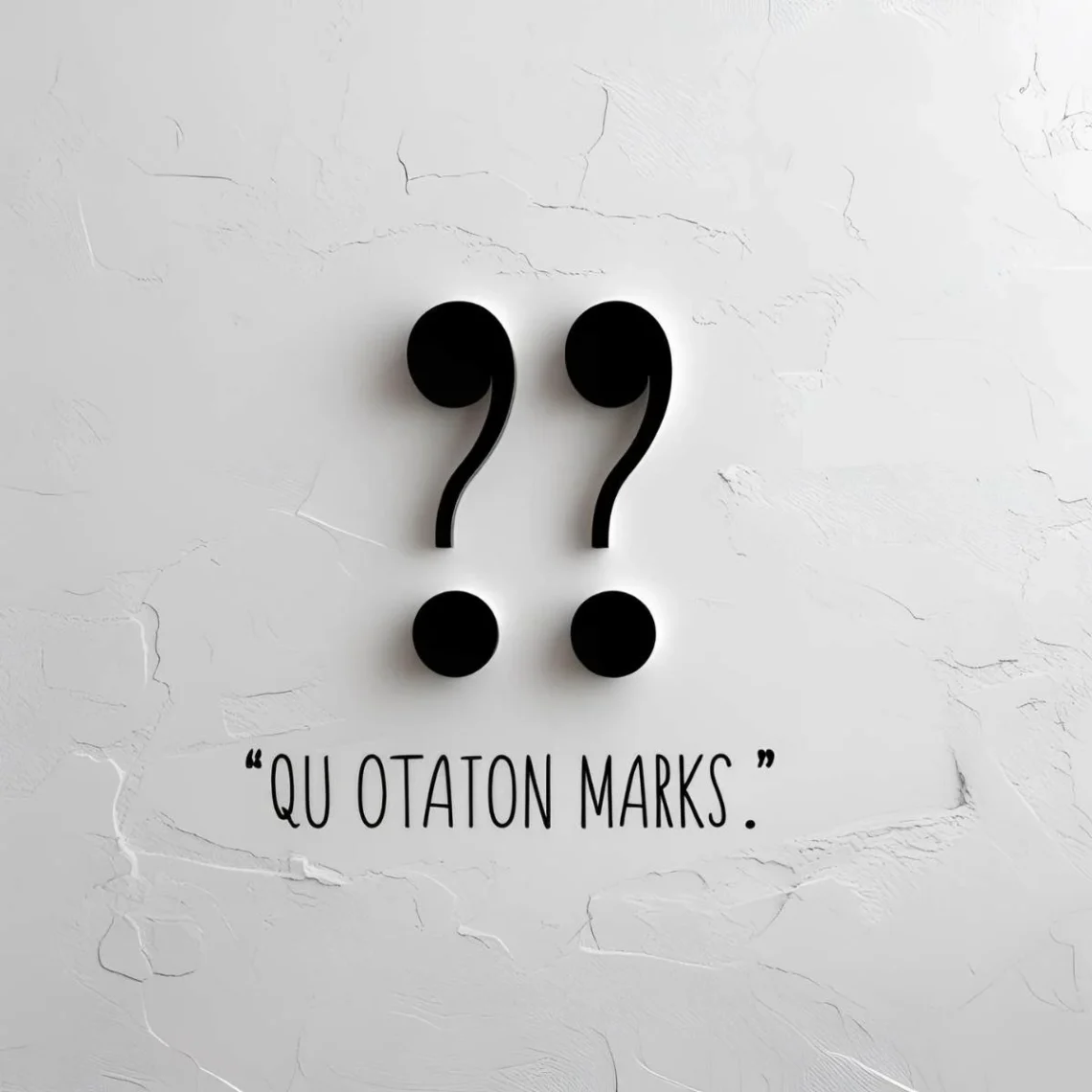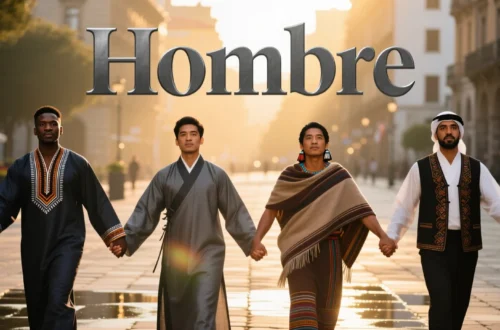Picture a writer in a cozy Parisian café, scribbling a dialogue with elegant « guillemets » to frame their words. The simple act of quoting, marked by symbols like quotation marks, carries a universal purpose: to highlight speech or ideas. Yet, across languages and cultures, these symbols vary, each reflecting unique typographic traditions.
For instance, whether it’s the angular 「 kagikakko 」 in a Tokyo manuscript or the understated „ niedrige Anführungszeichen “ in a Berlin novel, quotation marks reveal a culture’s approach to clarity and style.
Let’s embark on a global journey to explore how quotation marks are used in different languages and what they tell us about their societies.
Reference Table: Quotation Marks in Different Languages
| Language | Quotation Marks | Cultural/Linguistic Insight |
|---|---|---|
| French | « » (guillemets) | Point outward, with spaces inside, reflecting French typographic elegance. |
| Spanish | « » (comillas angulares) | Used alongside English-style quotes in some regions, showing flexibility. |
| Italian | « » (virgolette) | Similar to French, emphasizing clarity in dialogue. |
| German | „ “ (Anführungszeichen) | Lower opening quote, a distinctive feature in German typesetting. |
| Mandarin | 「 」 (yǐnyònghào) | Corner brackets, used for emphasis and dialogue in Chinese texts. |
| Hindi | “ ” (uddharaṇ cihna) | Adopts English-style quotes, reflecting colonial influence. |
| Japanese | 「 」 (kagikakko) | Angular brackets, often paired with vertical writing in traditional texts. |
| Korean | “ ” (in-yong-pyo) | Uses English-style quotes, influenced by modern global standards. |
| Arabic | « » (علامات الاقتباس) | Mirrors French style, used in over 20 countries with right-to-left script. |
| Swahili | “ ” (alnukta za kunukuu) | Adopts English quotes, reflecting colonial and global influences. |
| Zulu | “ ” (izimpawu zokucaphuna) | Uses English-style quotes, common in South African writing. |
| Yoruba | “ ” (ààmì ìdámọ̀) | Follows English conventions, tied to Nigeria’s colonial history. |
| Maori | “ ” (tohu whakahuahua) | Uses English quotes, reflecting New Zealand’s bilingual context. |
| Hawaiian | “ ” (kiko kenika) | Adopts English-style quotes, aligned with modern Hawaiian writing. |
| Cherokee | “ ” (digowelodi) | Uses English quotes, adapted for Cherokee syllabary texts. |
European Languages: Typographic Traditions in Quoting
European languages use varied quotation marks, each tied to cultural and typographic norms. For example, in French, « guillemets » frame quotes with spaces inside, reflecting France’s emphasis on elegant formatting. Writers in Paris use them for dialogue and citations, creating a polished look. Meanwhile, Spanish employs « comillas angulares » in formal texts, though English-style “ ” quotes are common in Latin America, showing regional adaptability. Additionally, Italian uses « virgolette », similar to French, prioritizing clarity in novels and newspapers. In German, „ Anführungszeichen “ feature a low opening quote, a unique trait that sets German texts apart, often seen in Berlin’s academic works. Thus, these symbols blend tradition and function, from French sophistication to German precision.
Asian Languages: Diverse Symbols of Emphasis
Asia’s linguistic diversity shapes unique quotation marks, often reflecting script and tradition. For instance, in Mandarin, 「 yǐnyònghào 」 (corner brackets) are used for dialogue and emphasis, aligning with Chinese calligraphy’s angular aesthetic. In Hindi, “ uddharaṇ cihna ” follow English-style quotes, a legacy of British colonial influence seen in India’s newspapers. Similarly, Japanese uses 「 kagikakko 」, angular brackets that suit vertical writing, common in Tokyo’s manga and literature. In Korean, “ in-yong-pyo ” adopt English quotes, reflecting globalized publishing standards in Seoul. Finally, Arabic’s « علامات الاقتباس », used in over 20 countries like Egypt and Iraq, mirror French guillemets, adapted for right-to-left script. These symbols highlight Asia’s blend of tradition and modernity, from calligraphic roots to global influences.
African Languages: Quoting in a Colonial Legacy
African languages often adopt English-style quotation marks, shaped by colonial histories. For example, Swahili, spoken in over 20 countries like Kenya and Tanzania, uses “ alnukta za kunukuu ”, reflecting British influence in East African publishing. In Zulu, “ izimpawu zokucaphuna ” are English-style quotes, used in South Africa’s educational texts with a nod to accessibility. Similarly, Yoruba’s “ ààmì ìdámọ̀ ” in Nigeria follow English conventions, seen in Lagos’s vibrant print media. These marks, used across diverse African contexts, emphasize practicality and global alignment, often appearing in community newspapers and schoolbooks.
Indigenous & Island Languages: Simplicity in Quoting
Indigenous and island languages typically use English-style quotation marks, adapted to local scripts. For instance, Maori in New Zealand uses “ tohu whakahuahua ”, English quotes that fit bilingual texts alongside English. In Hawaiian, “ kiko kenika ” are English-style quotes, used in modern Hawaiian literature to frame proverbs or stories. Similarly, Cherokee’s “ digowelodi ” adopt English quotes, integrated into the Cherokee syllabary for storytelling. In Samoan, English-style quotes are used in written texts, reflecting Pacific islands’ ties to English-speaking nations. Across these cultures, from New Zealand to the Cherokee Nation, quotation marks prioritize clarity, often blending with oral storytelling traditions.
Cultural Insights: The Evolution of Quotation Marks
Quotation marks have evolved with writing systems and cultural exchanges. For instance, French « guillemets », named after printer Guillaume Le Bé (16th century), spread to languages like Spanish and Arabic through European influence. In Asia, Japanese 「 kagikakko 」 emerged with movable type in the 19th century, suited to vertical scripts. Moreover, English “ ” quotes, standardized in the 17th century, spread globally via colonialism, shaping African and Indigenous languages. In Arabic, « » marks reflect medieval manuscript traditions, adapted for modern typography. These symbols carry histories of printing, colonization, and globalization, uniting diverse scripts in the act of quoting.
Proverbs and Sayings: Wisdom in Quotes
- French: “Les paroles s’envolent, les écrits restent.” (Words fly away, writings remain.) – Highlights the permanence of quoted text.
- Hindi: “Shabd likhe, dil se dil tak.” (Words written, from heart to heart.) – Ties quotes to emotional connection.
- Swahili: “Maneno yaliyonukuliwa ni kama mawe thabiti.” (Quoted words are like solid stones.) – Emphasizes the strength of quotes.
- Japanese: “Koto wa kaki, kokoro wa tsutau.” (Words are written, hearts are conveyed.) – Links quotes to emotional expression.
- Yoruba: “Ọ̀rọ̀ tí a kọ sílẹ̀ ni yóò dán.” (Written words will shine.) – Celebrates the lasting impact of quotes.
FAQs
Why do some quotation marks look similar?
European influence (e.g., French guillemets in Arabic) and English’s global spread (e.g., in Swahili, Hindi) create similarities through cultural exchange.
What’s the oldest form of quotation marks?
French « guillemets », from the 16th century, are among the earliest standardized forms, later influencing other languages.
How do cultures shape quotation mark use?
Traditional scripts (e.g., Japanese vertical writing) dictate unique forms, while colonial legacies (e.g., English quotes in African languages) standardize others.
Conclusion
From « guillemets » in France to 「 kagikakko 」 in Japan, quotation marks frame a universal act of highlighting words across cultures. Each symbol, whether the elegant « tamam » in Arabic or the simple “ pai ” in Maori, reflects typographic traditions while uniting people in shared expression. Consequently, these marks remind us that quoting is a global language, bridging scripts and histories. How are quotation marks used in your language, and what do they mean to you? Share your thoughts below—we’d love to hear your story!






